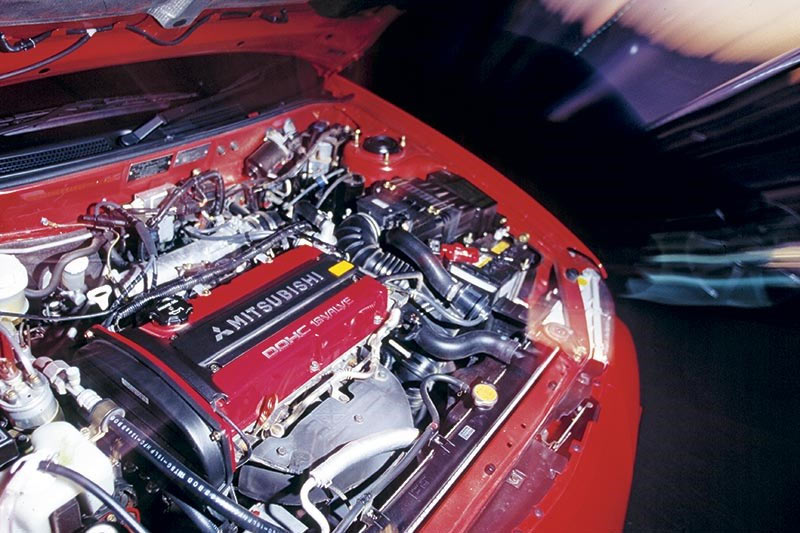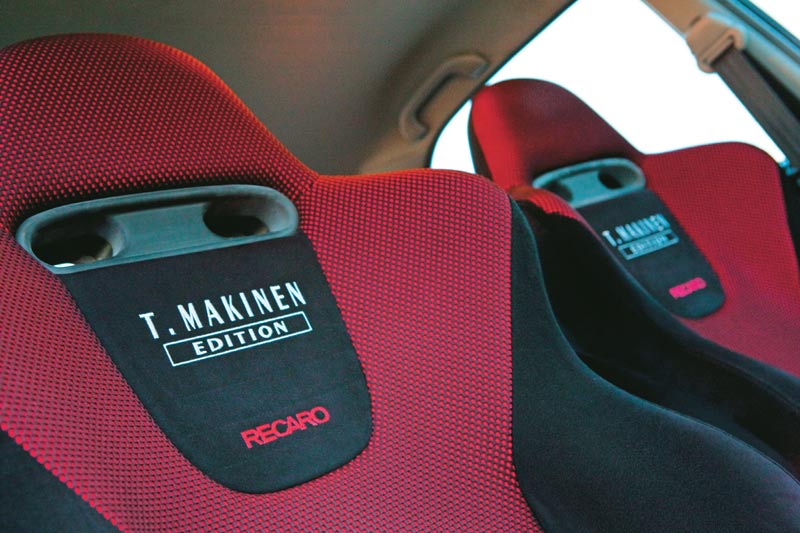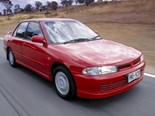1993-2010 Mitsubishi Evo Buyer's Guide



|
Humble Lancer in origin, but potent road burner in developed form, the Evo is a stunning goer that's bound to please
1993-2010 Mitsubishi Evo
Mitsubishi developed an ‘Evolution’ version of its all-wheel drive, turbo-engined Lancer to win rallies, but along the way produced a competent and coveted road car.
The plan was to sell 2500 EVO derivatives and qualify the 4WD Lancer GSR for Group A rally competition; the objective was achieved within days of the model’s announcement.
Retrospectively labeled ‘EVO 1’, the original model remained available until late 1993 and by then production had reached 5000 cars. The EVO II version recorded a similar total but later versions would manage up to 9000 units.
Australia received fewer than 20 of these as new cars, with most earmarked for rally teams including Mitsubishi’s own Ralliart operation.
| Read next: 1992-1996 Mitsubishi Lancer GSR buyer's guide
The EVO’s engine had already proved its performance mettle when powering the heavier Galant VR4. With two litres and a bumper-mount intercooler, early EVOs generated a useful 182kW.
Weight was down 70kg on the VR4 and 0-100km/h acceleration took less than six seconds. Competition-spec RS versions were stripped pretty much to the bone and weighed a scant 1170kg.

All EVO versions of the Lancer are characterised by a rear-mounted wing that grew from modest dimensions in EVO 1-3 to reach almost roof height in later applications. The bigger the wing the greater the weight but its influence on rear grip justified the expansion in surface area.
The car’s first major rally win came in late 1994, followed by two WRC victories in 1995 for Swede Kenneth Ericsson. After that the decade belonged to Finland’s Tommi Makinen who won four consecutive WRC Driver’s Championships from 1996-99 and the Manufacturers’ title in 1998.
Makinen-commemorative (EVO 6.5) cars were the first EVOs to be publicly sold on the Australian market. Earlier models and many later ones will be used imports from Japan. Of these, EVO VI-VIII cars are the most easily found and not expensive.
The 2001-release EVO VII introduced a longer 2625mm wheelbase and redesigned body. Part-way through the VII model cycle, a six-speed manual transmission was introduced and also an automatic version, which must have bothered the purists to an extent.
With popularity came motivation to produce EVOs for all markets. Noting the success of its Makinen Edition, Mitsubishi divided its EVO VIII range into four separate derivatives and to this added Limited Editions. These included an MR version with aluminium turret, uprated traction control and BBS wheels. There was also a stripped-out RS model pared weight back to mid-1990s levels.

MARKET REVIEW
The difference between a ‘peach’ or a ‘lemon’ when choosing an EVO is around $300. That’s how much a professional auto engineer specialising in this kind of car will charge for a full mechanical inspection and estimate to fix any faults found. These are a complex car with every chance of problems due to an abusive previous owner.
EVO VII-VIIIs represent exceptional buying in the current market. These cars are low-volume imports so confirming service history can be difficult. But they are cheap. Well-kept cars with some documentation and showing 150-180,000km sell for around $15,000. Sub-100K examples make $20-25,000.
Going later and spending more money will be wise if the car is going to be used as regular transport. With large numbers of EVO IX and locally-sold X versions in the market prices should be keener than they currently are. Shop circumspectly and bargain hard.
EVOs perform very successfully in club-level motor sport including rallying, dirt sprints and circuit racing. Building a competition EVO from scratch involves throwing away pretty much everything bar the block and body so buy the cheapest available example.
BUYER'S CHECKLIST
BODY & CHASSIS
Most EVOs in the local market were originally sold overseas and sometimes in places with a casual approach to body repairs. Measure panel gaps for consistency, look behind the rear pillars for stress cracks and around the window apertures for rust bubbles. The boot spoilers are heavy and may be distorting the boot-lid. The front bumper/air-dam needs to be inspected for scrapes and cracks and while you’re there check the intercooler for damage. New and second-hand parts are available but check the cost before agreeing to buy a car with panel damage. Bonnets start at $200 but doors and good boot-lids are scarce and have been advertised at close to $1000 each.

ENGINE & TRANSMISSION
EVO engines thrive on high revs and hard work but need proper maintenance. Cars without recent service history should be regarded as suspect and allowances made for work-in-waiting. Changing oil and the filter every 5000 kilometres is essential to engine and turbocharger life. A turbo that’s been cared for and not subjected to outrageous boost should survive for 100,000 kilometres. Cam belts need changing every 70,000km. Replacing a worn gearbox can cost $3-4000 before installation, with differential centres $1500-1800. Be cautious of drive-line clunks, a slipping clutch and gears that are difficult to engage when the ‘box is cold.
SUSPENSION & BRAKES
These components need to be maintained in top condition for an EVO to perform as it should. Replacing a worn suspension with factory-correct Bilstein parts will cost the better part of $5000. Other brands that still do the job very well cost half the price. Look for inner front tyre wear that indicates worn bushings, poor alignment or possibly something bent in the steering department. Great brakes characterise the EVO and again the original-equipment Brembos do a fantastic job. However, they are expensive – up to $3000 for a full rotor and pad replacement – and quality alternatives cost less than $2000. Damaged wheels are common and expect to pay around $300 per corner for replacements.

INTERIOR & ELECTRICS
If your EVO seats are structurally sound but the fabric is worn it will be cheaper to invest in a retrim than second-hand replacements. Replacement seats are available but cost more than $2000 per pair for genuine items. Electrical components are basic and generally reliable. Ensure with the engine running there are readings on all of the gauges and that air-conditioning responds quickly. Tail-light units cost over $300 to replace and need to be inspected for damage and water behind lenses.
1993-2010 Mitsubishi Evo
NUMBER BUILT: 55,000 approx from 1993-2007
BODY: integrated body/chassis steel (mostly) four-door sedan
ENGINE: 1997cc in-line four-cylinder with double overhead camshafts, fuel injection and turbocharger
POWER & TORQUE: 206kW @ 6500rpm, 373Nm @ 3600rpm
PERFORMANCE: 0-100km/h 5.3 seconds, 0-400 metres 13.4 seconds (EVO VIII)
TRANSMISSION: five or six-speed manual (automatic optional in EVO VII)
SUSPENSION: Independent with coil springs, struts, A-Arms, anti-roll bar (f). Independent with upper and lower links, coil springs, struts and anti-roll bar (r).
BRAKES: disc front (f) , disc (r) power assisted (ABS on some)
TYRES: 225/45ZR17 radial
Unique Cars magazine Value Guides
Sell your car for free right here
Get your monthly fix of news, reviews and stories on the greatest cars and minds in the automotive world.
Subscribe

.jpg)












